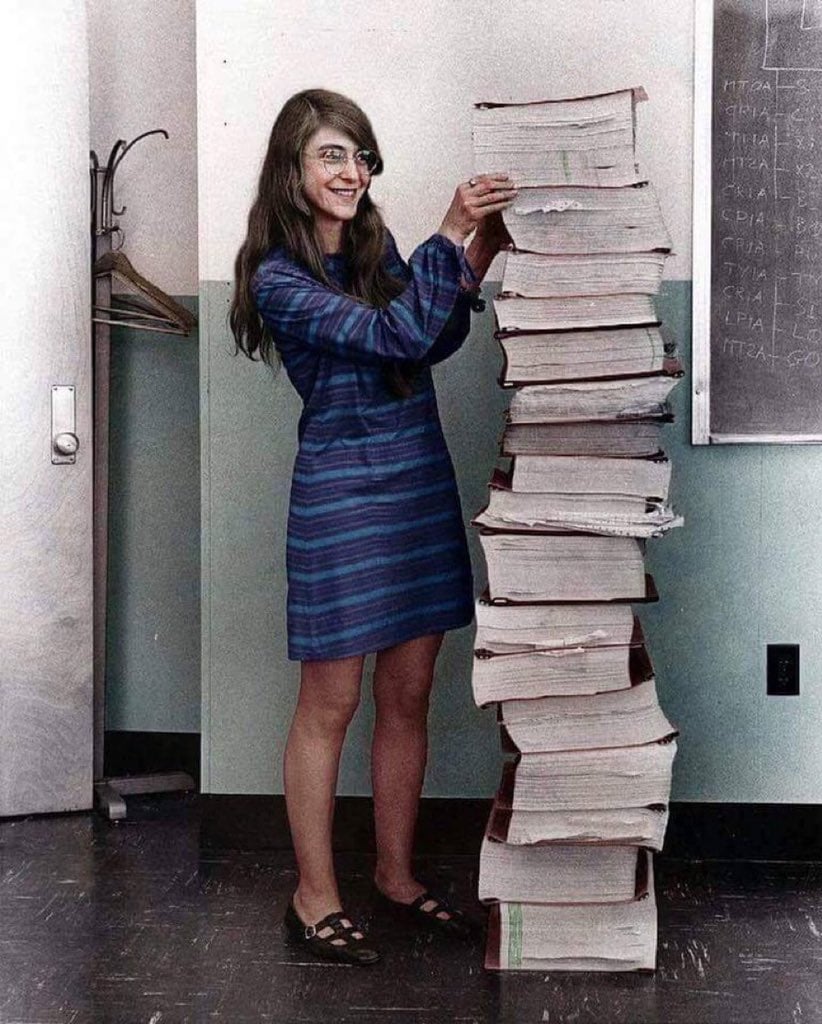1332
you are viewing a single comment's thread
view the rest of the comments
view the rest of the comments
this post was submitted on 11 Jul 2023
1332 points (90.3% liked)
Next Fucking Level
3529 readers
1 users here now
Next Fucking Level Videos and Gifs.
Rules
- Be respectful and inclusive.
- No harassment, hate speech, or trolling.
- Engage in constructive discussions.
- Share relevant content.
- Follow guidelines and moderators' instructions.
- Use appropriate language and tone.
- Report violations.
- Foster a continuous learning environment.
founded 2 years ago
MODERATORS

The title is a bit misleading, this is a printout of the code that she indeed wrote into the computer first.
She also had a team of engineers who I'm sure deserve at least some of the credit. This title is bunk.
If it was printed later or written on punch cards... how much code are we actually looking at?
Each punch card/ has 80 characters.
So way less than you'd imagine, but this is also late 60s machine code (even lower than assembly), and it was mathematically proven to be correct.
Still assembly. Nasa's Apollo Guidance Computer Assembly specifically. A punch card is to translate the code into 1s and 0s that, each line of which, constitutes an instruction that is fed to a punch card reader. However, that is not what this was made for. This code didn't went on to a punch card, it went to an instruction loom. The system's read-only memory consisted of a weave of ferromagnetic rings and copper wire that is called rope core memory. As in, Nasa paid people to carefully physically weave by hand the individual 1s and 0s.
Afaik, the loom thing was just for the computer on the Apollo itself, but I could be wrong.
Each punch card/ has 80 characters.
So way less than you'd imagine, but this is also late 60s machine code (even lower than assembly), and it was mathematically proven to be correct.